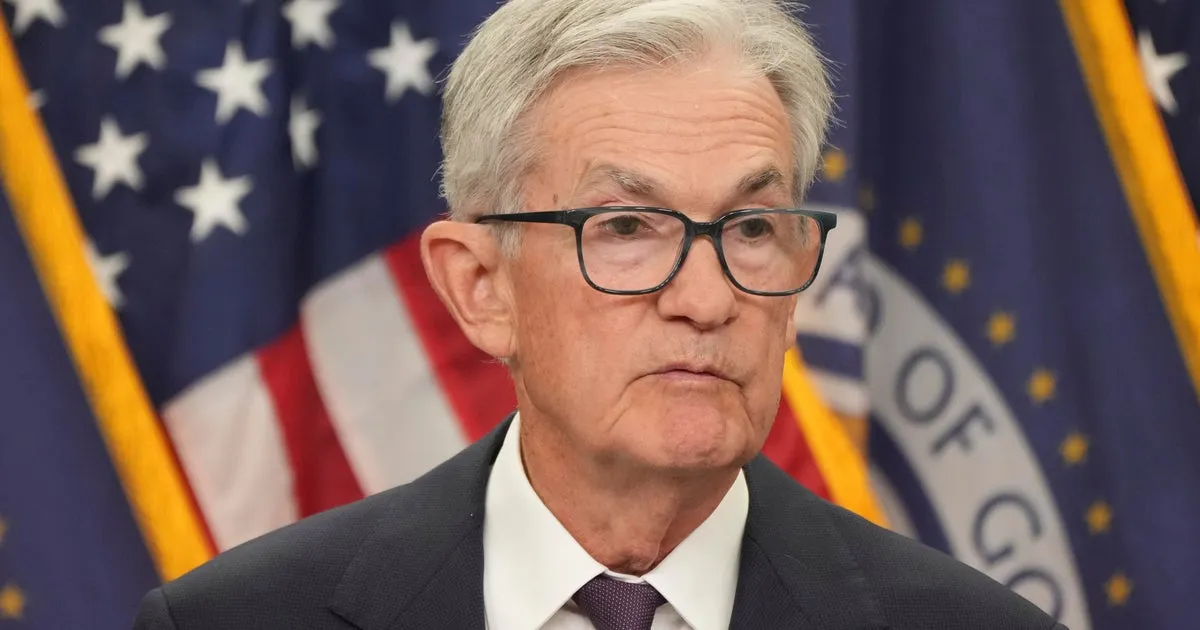
The Federal Reserve made a significant move on Wednesday by lowering its benchmark interest rate by 0.25 percentage points. This marks the first reduction since December 2024 as the U.S. economy faces a stalling labor market and slower economic growth. The new federal funds rate now ranges between 4% and 4.25%, a decrease from the previous range of 4.25% to 4.5%.
The last time the central bank eased borrowing costs was in December 2024, when it similarly trimmed rates by a quarter of a percentage point. Looking ahead, Federal Reserve officials project two more rate cuts in 2025 and one in 2026, as detailed in the central bank's summary of economic projections. This outlook may disappoint Wall Street, where investors had anticipated a total of five cuts over the remainder of this year and into 2026.
According to the Fed's median projections, the nation's unemployment rate, currently at 4.3%, is expected to rise to 4.5% by the end of the year. However, it is forecasted to decrease to 4.4% in 2026 and further to 4.3% in 2027. Meanwhile, the Personal Consumption Expenditures (PCE) index, which is the Fed's preferred measure of inflation, is projected to stabilize at 3% this year, significantly above the central bank's 2% annual target. The PCE is expected to decrease to 2.6% in the following year and 2.1% by 2027. Core inflation, which excludes the volatile food and energy sectors, is forecasted at 3.1% for this year.
The Fed's decision comes as it grapples with a dual economic challenge: controlling inflation, which has surged in recent months, while simultaneously fostering job growth, which has weakened. Typically, the Fed raises interest rates to dampen inflation and lowers them during economic downturns to stimulate consumer spending and business investment. Fed Chair Jerome Powell emphasized this approach during a press conference after the two-day meeting, noting that the Fed views the slowing labor market as a more pressing concern than rising prices.
Concerns about the health of the labor market are growing. According to Cory Stahle, an economist at the Indeed Hiring Lab, while unemployment and layoff rates remain stable at historically low levels, they may not stay that way if labor market conditions continue to deteriorate. Powell also pointed out that recent labor data indicates that recent college graduates and those on the margins are struggling to find employment.
The rate cut takes place amidst significant political pressure on the Fed, particularly from President Trump. He has accused Powell of being slow to ease borrowing costs and bolster economic activity. Additionally, Trump has sought to exert influence over the Fed by attempting to remove Fed Governor Lisa Cook from her position, alleging involvement in mortgage fraud—a claim she has denied. An appeals court recently ruled that Cook can retain her position.
In a related development, Stephen Miran, an economic adviser to Trump, was confirmed by the Senate to fill an open spot on the Fed's Board of Governors. Although he is a new member of the Federal Open Markets Committee (FOMC), his late addition means he was unable to submit an economic projection or monetary policy path prior to the rate cut. All voting FOMC members except Miran favored the quarter-point cut, with Miran advocating for a more substantial reduction of 0.50 percentage points.
The key question for both consumers and businesses is whether the Fed's decision to cut borrowing costs will lead to additional reductions in 2025 and into 2026. The FOMC has two more meetings scheduled for this year, set for October and December. Current indications suggest that the committee is in favor of two further 0.25 percentage-point rate cuts this year, although it anticipates less easing in 2026 than what the markets have recently factored in. This shift in expectations is partly due to a more optimistic outlook on economic and labor market conditions for the upcoming year, according to Stephen Brown, a deputy chief economist at Capital Economics.
In summary, the Federal Reserve's decision to lower interest rates reflects its concern over the slowing labor market and the ongoing challenges posed by inflation. As the central bank navigates these complex economic dynamics, its future decisions will be closely watched by both investors and the public.